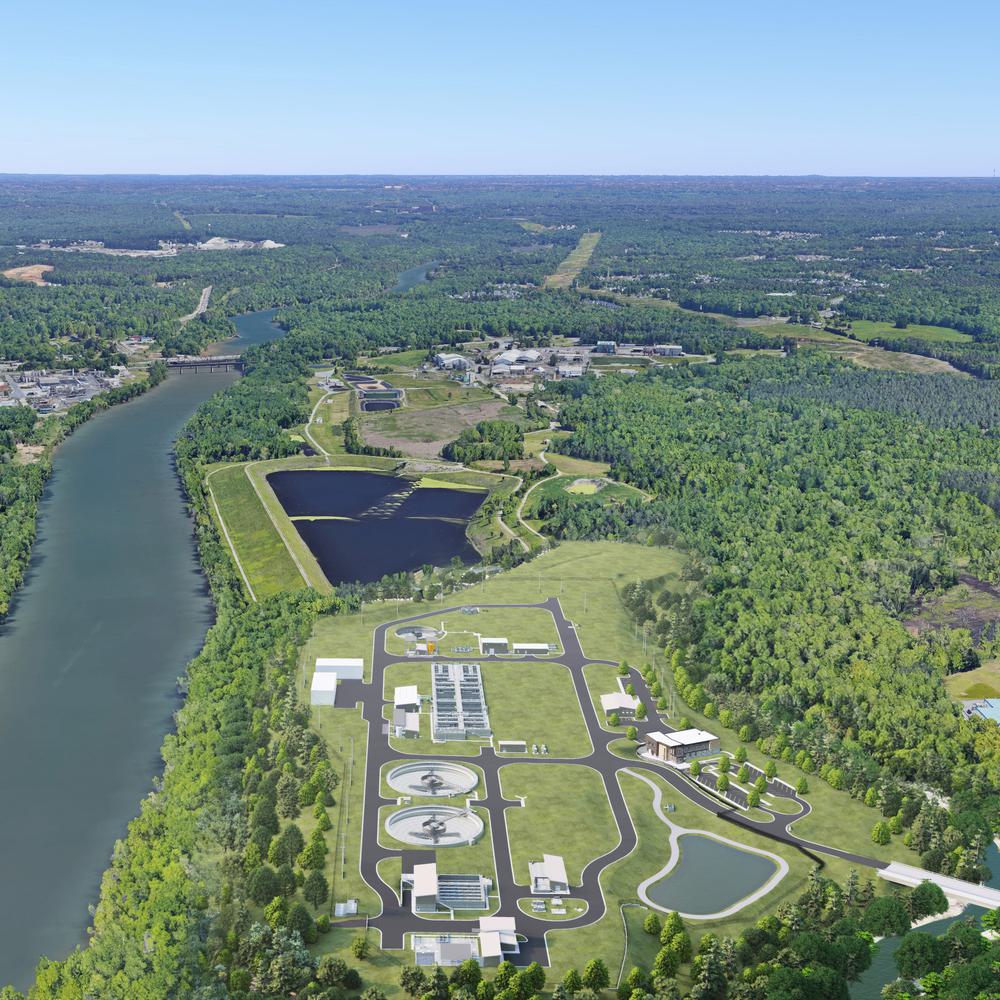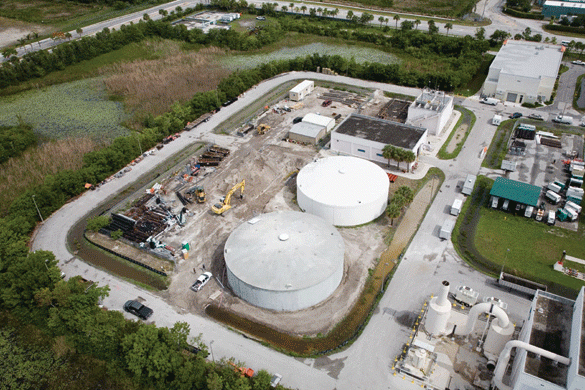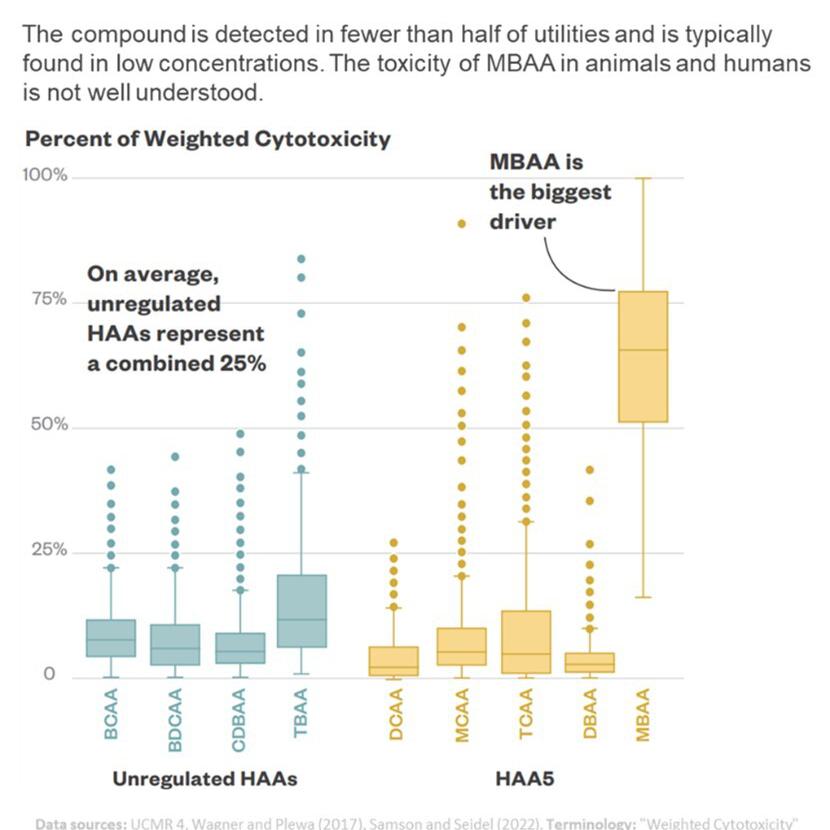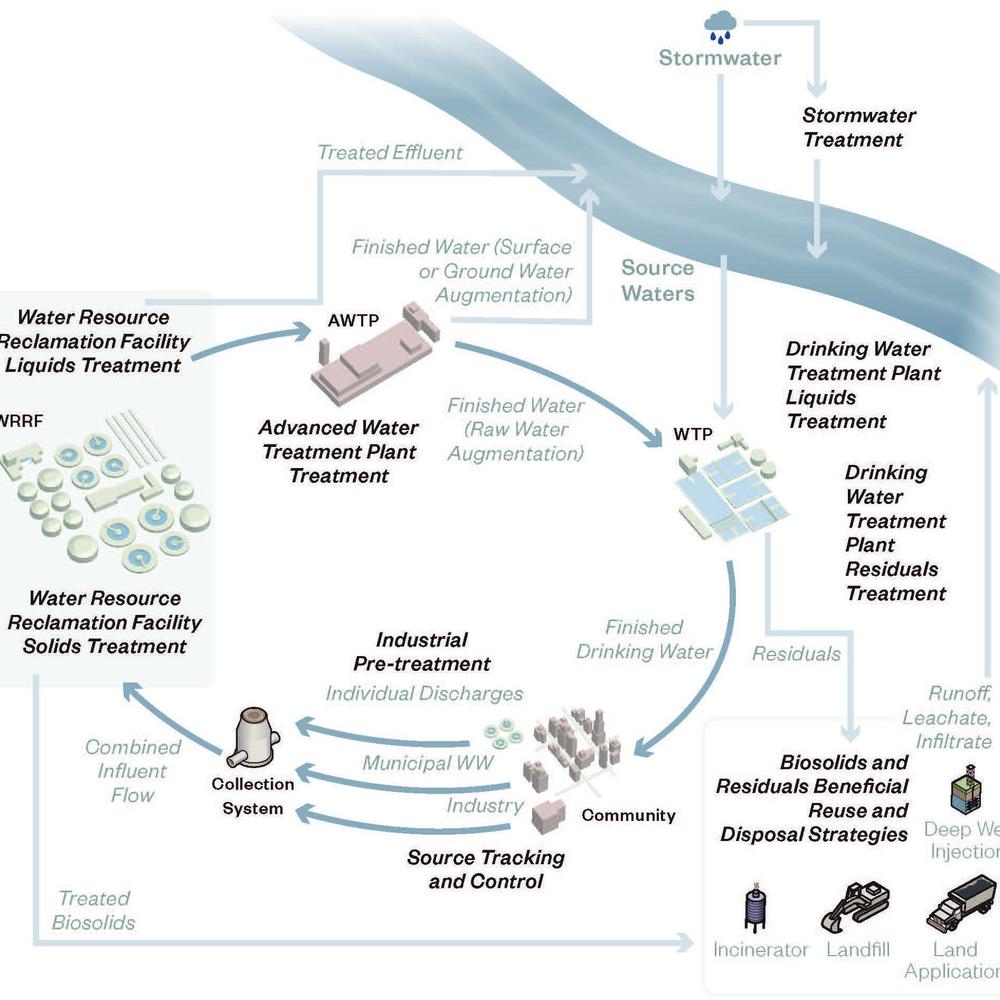Next-Generation Nutrient Removal Method Meets Nitrogen Target While Cutting Costs
Hazen helped test an innovative nitrogen removal technique known as PANDA at a Northern Virginia wastewater treatment plant.
At a Glance
- In collaboration with Fairfax County and Virginia Tech, Hazen piloted an innovative nitrogen removal method called partial nitrification/denitrification/anammox (PANDA) at the Noman M. Cole Jr. Pollution Control Plant.
- The testing, which used a configuration already in place at the plant, showed that PANDA could save the facility up to $200K per year while meeting the total nitrogen limit of 3 milligrams per liter for effluent.
- The project was one of the first to show the feasibility of using PANDA while meeting a total nitrogen limit of 3 mg/L.
Yewei Sun is a scientist in Hazen's Wastewater practice group who focuses on advanced biotechnologies for treating water and wastewater.
Related Topics:
The Noman M. Cole Jr. Pollution Control Plant serves a large portion of Fairfax County, the most populous county in Virginia. The facility has been using nitrification and denitrification to ensure that its effluent meets the total nitrogen limit of 3 milligrams per liter (mg/L). But as part of a broader effort to reduce energy use, chemicals and greenhouse gas emissions, the County decided to try something new.
With support from Hazen and Sawyer and Virginia Tech, the County tested a cutting-edge nitrogen removal process called partial nitrification/denitrification/anammox—also known as PANDA or PdNA—at the Noman M. Cole Jr. facility. PANDA uses a red-colored bacteria to perform anaerobic ammonia oxidation, or anammox, as part of the removal process. The technique can reduce the need for aeration and supplemental carbon while potentially increasing treatment capacity.
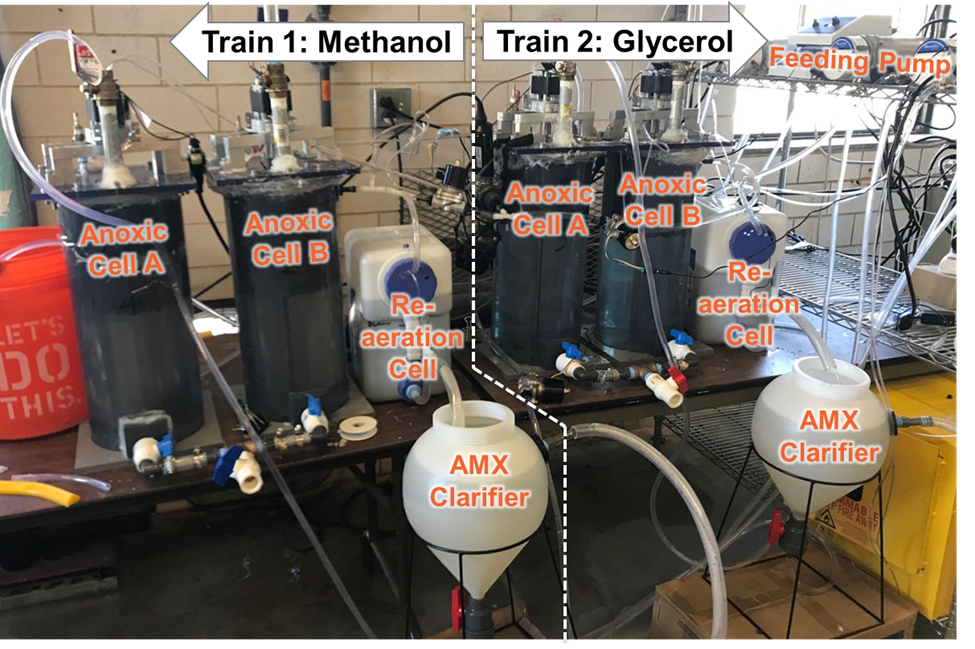
To test the effectiveness of PANDA within the plant’s existing configuration, the Hazen and Virginia Tech team helped the Fairfax County plant create and test a miniature version of its treatment system. The team also used two different trains (pictured here) to test the effectiveness of using different carbon sources—methanol and glycerol—and found little difference in the results between the two.
The Fairfax County plant already had an ideal setup for implementing PANDA: activated sludge tanks followed by tertiary moving bed bioreactors (MBBRs). MBBRs are reactors that contain suspended pieces of plastic, which create surfaces for slow-growing anammox bacteria to grow on.
The first step was to test the process on a small scale. Hazen and Virginia Tech engineers created a tabletop-sized version of the treatment system. Then, for more than nine months, they operated and maintained the reactors using water from the treatment plant. During testing, the team investigated how different carbon sources, hydraulic retention times and loading rates affected the efficacy of PANDA. They also looked at the impacts of fluctuating flows, loads and temperatures.
The team found that the facility could use PANDA to meet its total nitrogen limit while saving up to $200,000 per year. The project was one of the first to demonstrate the feasibility of utilizing PANDA while meeting a total nitrogen limit of 3 mg/L.
The tiny wheels are the suspended pieces of plastic used to create growing areas for anammox bacteria in the MBBRs. Cells 1A and 1B show bacteria grown using methanol, while 2A and 2B show bacteria grown using glycerol.
